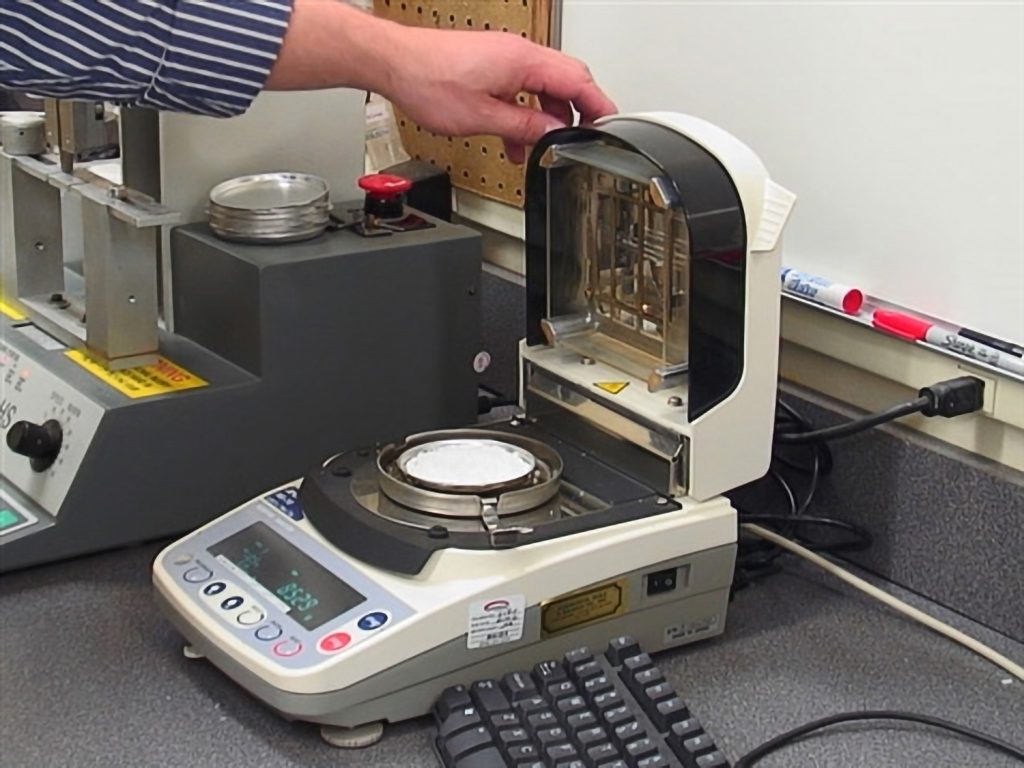Just because the material has been dried at the specified temperature for the specified amount of time does not guarantee it is actually dried to the material supplier’s specifications. If you dry material in-house, you must have a method of measuring the actual moisture contained in the material.
In most hygroscopic materials, water attacks the polymer — resulting in shorter, weaker, and more brittle polymer chains. While a part molded from such material may look good, it can fail miserably in the field. If you grind up these weaker parts and then test the material shortly after processing, you will likely find the material has a moisture level much higher than the supplier’s recommendation.
Moisture Analyzers
The most common method of material moisture analysis is a Moisture Analyzer. In fact, many molders have one in the materials handling area and one in the quality department. These simply weigh a material sample, heat the sample, and measure the amount of moisture lost during heating.
For most materials, moisture analyzers are a great way to measure the moisture in your material. Unfortunately, for materials with lots of additives such as processing aides and flame retardants, it may falsely report these as moisture when they vaporize.
Relative Humidity Analyzers
Relative Humidity Analyzers use the weight of the sample combined with the relative humidity of the air around the sample after heating to determine the amount of moisture in the material. Since the relative humidity sensor only measures water, vaporized additives are not measured.
If you have unique materials which never seem to dry regardless of how long you dry them, you may want to consider investing in a relative humidity analyzer for your material.
For more information about moisture measurement and material drying, be sure to check out Routsis Training’s Material Drying Technology. This online training programs give personnel a better understanding of how different polymers are best dried and prepared for reliable processing — and demonstrate how proper plastics material handling is critical to developing a consistent process and delivering quality products to your customers.

0 Comments Leave a comment